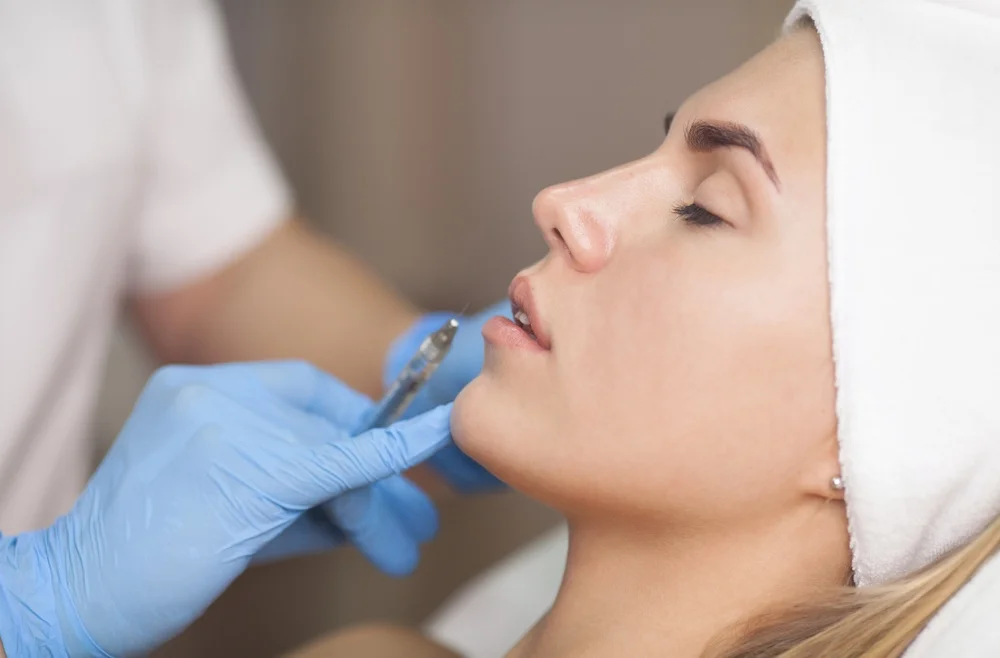Dermal fillers are injections used for diminishing facial lines and restoring volume and fullness in the face. Several types of dermal fillers are injected in areas such as around the eyes, mouth, and nose. This common cosmetic procedure typically produces results right away and can last months or years.
What aredermal fillers?
Dermal fillersplump up wrinkles, and smooth lines, and restore volume in your face. Your healthcare provider will inject these substancesunder the skin. You may choose to get dermal fillers to enhance your facial features and gain a more youthful appearance. Dermal filler sessions are usually less than half an hour and show immediate results. Depending on the type of filler and the location, your results can last months to years. As with any cosmetic procedure, there are risks, including infection, bleeding, and bruising.

Why are dermal fillers used?
As the body ages, it loses collagen, which is an important substance that exists in your skin, muscles, bones, and connective tissues. The decreased amount of collagen causes your skin to lose laxity and volume. You may choose to get dermal fillers to:
Add volume to sagging skin.
Make your facial features more symmetrical.
Plump up lips and cheeks.
Smooth wrinkles and creases on your face.
What are the types of dermal fillers?
There are many types of dermal fillers. The types of off-the-shelf fillers include:
Hyaluronic acid(HA):A naturally occurring acid in your skin that gives your skin volume and keeps it hydrated. With age, your body stops making hyaluronic acid. Results from HA injections usually last six months to a year.
Calcium hydroxylapatite (CaHA):A type of filler that consists of a substance you have in your bones. Results from these fillers typically last around a year. Healthcare providers usually use CaHA fillers for deeper wrinkles.
Polylactic acid(PLLA):A substance that helps your body create collagen. Healthcare providers usually use Poly-L-lactic acid to smooth deep wrinkles on your face. The results can last two years or more.
Your healthcare provider will review the types of dermal fillers and discuss the right option for you.

Where can dermal fillers be used?
Due to a range of needs, you can have Dermal Fillers in many areas of your face, the most common areas treated include:
Lips:Filler can enhance lip volume, define lip borders, and improve lip asymmetry.
Cheeks:Lost volume in the mid-face can be restored, and can also help improve the contour and definition of the cheekbones.
Nasolabial folds:These lines can be filled to soften and smooth their appearance.
Marionette lines:Dermal fillers can be injected into the nose-to-chin lines to minimize their appearance.
The hollows or dark circles under the eyes can be treated for a less tired-looking appearance.
What happens during a dermal filler procedure?
You may choose a medical spa or a healthcare provider’s office for receiving dermal fillers. The first step includes skin cleansing and then applying a lotion or cream with anesthetics. The anesthetic numbs the area so the treatment will be more comfortable. Your healthcare provider will use a thin needle to inject small amounts of fillers under your skin. The needle will pinch or sting, but most people don’t experience much pain during these injections. The injections can be done in several areas, taking up to an hour.

How do dermal fillers work?
Dermal fillers are formulated using a naturally occurring substance. This will help regulate your skin’s water balance. The gel-based filler injections will add volume and shape to the treated area.
What are the risks of having dermal fillers?
Though fillers are minimally invasive, they still come with some risks, including:
Pain, discomfort, or irritation
Bleeding at the injection site
Lesions that resemble acne
Asymmetric or undesirable results
Wounds or sores
Scarring
Conclusion
In conclusion, dermal fillers are a popular non-surgical treatment in cosmetic dermatology, known for their ability to restore volume and smoothness to the skin. They work by injecting substances such as hyaluronic acid or collagen into the skin, which fill in wrinkles, lines, and hollow areas, giving the skin a plumper and more youthful appearance. Dermal fillers can be used to treat a variety of areas, including the cheeks, lips, and under the eyes. While they offer immediate results, it’s important to note that they are not permanent and require regular maintenance. Despite potential side effects such as swelling or bruising, when administered by a trained professional, dermal fillers are generally considered safe and effective. As advancements continue in the field of cosmetic dermatology, the use and benefits of dermal fillers are expected to expand.